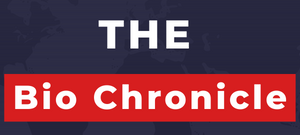Identity theft is one of the biggest problems that numerous businesses around the world are currently facing. Different companies and organizations employ various strategies to combat con artists who create fake identities for a variety of illegal activities. Using the method of identity document verification, a final customer is examined. Verifying documents is a secure way to evaluate a user’s status rapidly. Additionally, it aids in reducing money laundering and paper fraud. Due to the development of new document verification technologies, the yearly market for identity document verification is estimated to be worth 8.9 billion dollars.
Document Types That Need to Verify
In order to verify an individual’s identity, most documents they submit are attested by legal authorities. To ensure a person’s accurate identification, various authorities around the world demand multiple kinds of documents. The following documents should be double-checked:
- Identity Card
An individual’s ID card is the first piece of identification that needs to be verified. This is the initial step that all businesses worldwide take. This check is crucial to ensuring that the end user is genuine and not a fraudster using a false identity.
- Utility Bills
Utility bills are the kinds of documents that companies use for identification. These invoices help in confirming the client’s ownership of the address and payments.
- Bank Statements
Furthermore, bank statements and other financial records are helpful in confirming the legitimacy of the source. Many businesses and organizations demand access to their banking records before processing any transaction with a third party.
- Medical and Health Records
Another method for identifying a customer is through medical records. Businesses can learn much about the kind of client they are working with through health records.
The Significance of Identity Document Verification
International regulatory organizations like FATF have put AML/KYC regulations into place to combat global cybercrime. All businesses must ensure that everyone is abiding by the laws and regulations, or else they run the risk of receiving harsh fines. To stop the increase in fraud cases, it is necessary to adhere to AML standards. Industries must conduct appropriate due diligence procedures on their customers.
The Process of Identity Document Confirmation
The identity document verification process consists of three steps: detection, evaluation, and identification. The client will need to provide identification documentation from the appropriate legal authorities. The steps for verification of identity documents are:
- Document Submission
The user must submit official documents to the authorities in the first step so they can verify them. There is no doubt that the records are authentic and that they were sent by the government for legitimate purposes.
- Document Scanning
Businesses use different scanners to scan customers’ documents. Both conventional and mobile scanners are acceptable. All legal documents and paperwork must be observed for the process to be complete.
- Validation of Documents
By the combination of optical character recognition and artificial intelligence, documents are being examined. The documents are examined from various perspectives and with different tools and their eligibility. If the records are genuine, then the person submitting them must also be accurate.
- Verification of Documents
By reading the texts in the files, the system further validates the documents and ensures that the supplied data corresponds to the data extracted from the files.
Online Way of Document Verification
Many systems check various papers using an online method. Businesses may examine new customers’ paperwork before the onboarding procedure. A mobile camera or webcam is the principal tool in online identity verification. An online verification system uses an internet connection to convert manual documents into digital format.
The online system employs a variety of algorithms to determine the legitimacy of the papers. In conclusion, the documents are compared with the user data to ensure that the data is accurate. Businesses use an online AI system to complete this document verification. In order to examine and evaluate the documents, they are subjected to various automatic checks and evaluations.
The Benefits of Document Authentication
User Friendly
Because most software is based on artificial intelligence, authenticating documents online is simple. Automating various stages of document verification ensures the work.
Fast Processing
The online verification of identity documents is much faster than the traditional verification of documents. The quick data interaction of this process allows for faster document authentication.
Conclusion
The identity document verification procedure ensures clients are who they claim to be. Most industries use this method of identifying customer data. As a result of the widespread use of technology in our daily lives, the document authentication process has a significant impact on deterring criminals and dishonest people. The AI solution is a quick method for identifying and handling documents. It employs several algorithms to evaluate data from various documents, including ID cards, bills, and financial statements.


